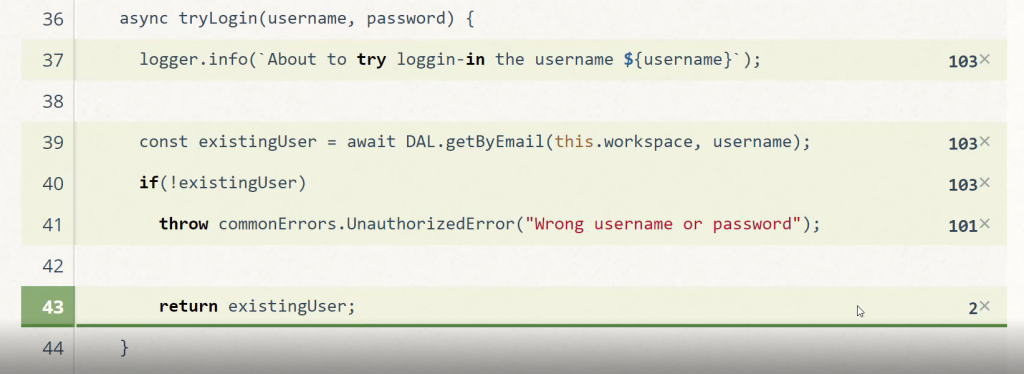⚪ ️ 4.2 Inspect coverage reports to detect untested areas and other oddities
:white_check_mark: Do: Some issues sneak just under the radar and are really hard to find using traditional tools. These are not really bugs but more of surprising application behavior that might have a severe impact. For example, often some code areas are never or rarely being invoked — you thought that the ‘PricingCalculator’ class is always setting the product price but it turns out it is actually never invoked although we have 10000 products in DB and many sales… Code coverage reports help you realize whether the application behaves the way you believe it does. Other than that, it can also highlight which types of code is not tested — being informed that 80% of the code is tested doesn’t tell whether the critical parts are covered. Generating reports is easy — just run your app in production or during testing with coverage tracking and then see colorful reports that highlight how frequent each code area is invoked. If you take your time to glimpse into this data — you might find some gotchas
❌ Otherwise: If you don’t know which parts of your code are left un-tested, you don’t know where the issues might come from
✏ Code Examples
:thumbsdown: Anti-Pattern Example: What’s wrong with this coverage report?
Based on a real-world scenario where we tracked our application usage in QA and find out interesting login patterns (Hint: the amount of login failures is non-proportional, something is clearly wrong. Finally it turned out that some frontend bug keeps hitting the backend login API)
